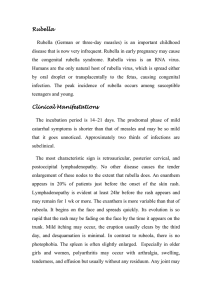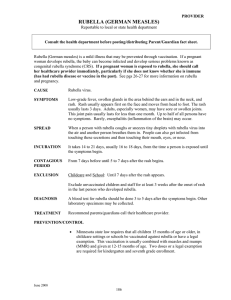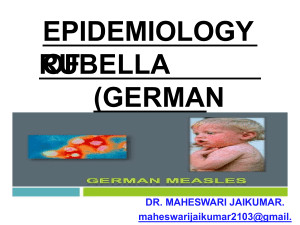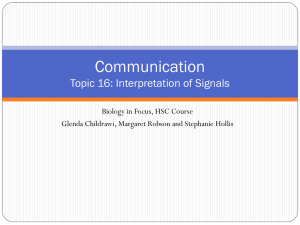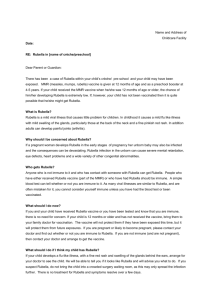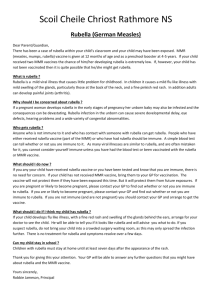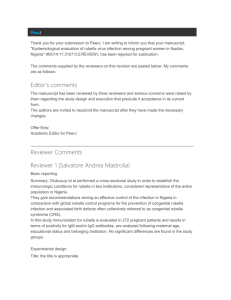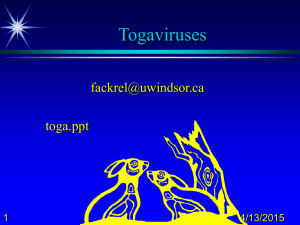Schauer
advertisement
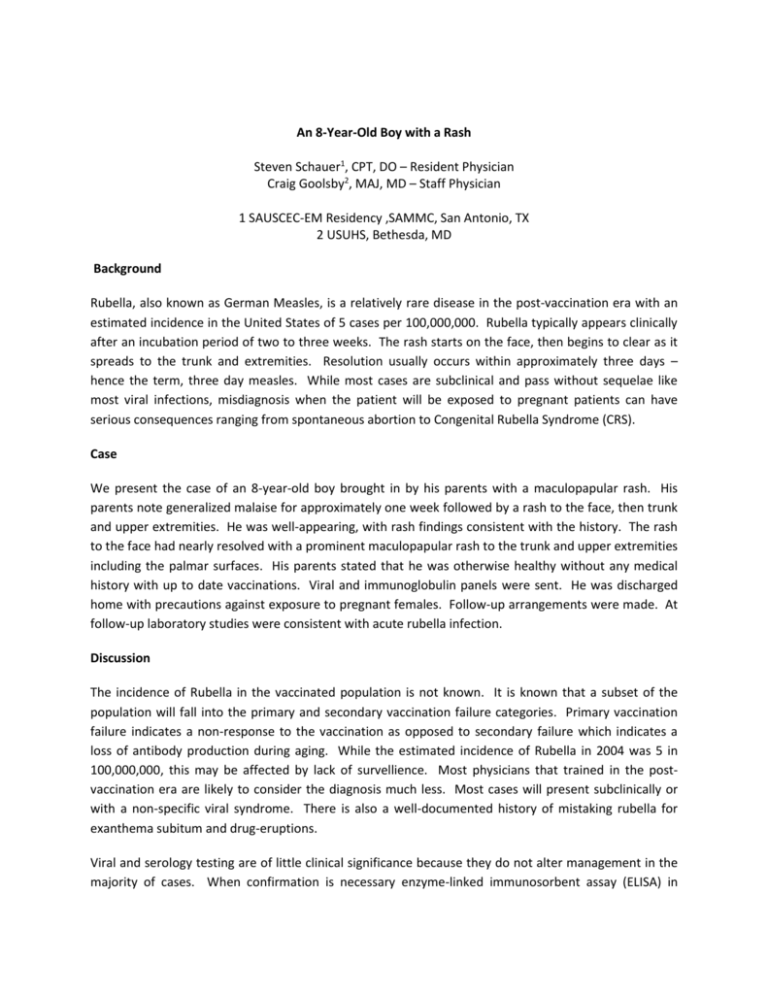
An 8-Year-Old Boy with a Rash Steven Schauer1, CPT, DO – Resident Physician Craig Goolsby2, MAJ, MD – Staff Physician 1 SAUSCEC-EM Residency ,SAMMC, San Antonio, TX 2 USUHS, Bethesda, MD Background Rubella, also known as German Measles, is a relatively rare disease in the post-vaccination era with an estimated incidence in the United States of 5 cases per 100,000,000. Rubella typically appears clinically after an incubation period of two to three weeks. The rash starts on the face, then begins to clear as it spreads to the trunk and extremities. Resolution usually occurs within approximately three days – hence the term, three day measles. While most cases are subclinical and pass without sequelae like most viral infections, misdiagnosis when the patient will be exposed to pregnant patients can have serious consequences ranging from spontaneous abortion to Congenital Rubella Syndrome (CRS). Case We present the case of an 8-year-old boy brought in by his parents with a maculopapular rash. His parents note generalized malaise for approximately one week followed by a rash to the face, then trunk and upper extremities. He was well-appearing, with rash findings consistent with the history. The rash to the face had nearly resolved with a prominent maculopapular rash to the trunk and upper extremities including the palmar surfaces. His parents stated that he was otherwise healthy without any medical history with up to date vaccinations. Viral and immunoglobulin panels were sent. He was discharged home with precautions against exposure to pregnant females. Follow-up arrangements were made. At follow-up laboratory studies were consistent with acute rubella infection. Discussion The incidence of Rubella in the vaccinated population is not known. It is known that a subset of the population will fall into the primary and secondary vaccination failure categories. Primary vaccination failure indicates a non-response to the vaccination as opposed to secondary failure which indicates a loss of antibody production during aging. While the estimated incidence of Rubella in 2004 was 5 in 100,000,000, this may be affected by lack of survellience. Most physicians that trained in the postvaccination era are likely to consider the diagnosis much less. Most cases will present subclinically or with a non-specific viral syndrome. There is also a well-documented history of mistaking rubella for exanthema subitum and drug-eruptions. Viral and serology testing are of little clinical significance because they do not alter management in the majority of cases. When confirmation is necessary enzyme-linked immunosorbent assay (ELISA) in combination with latex agglutination studies appear to have the highest sensitivity. Strict pre-cautions to avoid pregnant females must be given to reduce the risk of congenital rubella syndrome (CRS).
